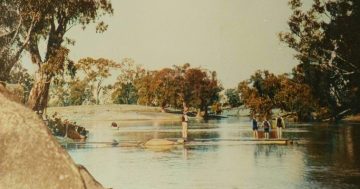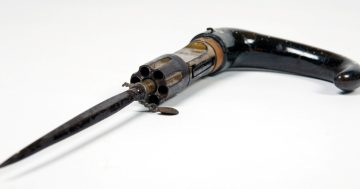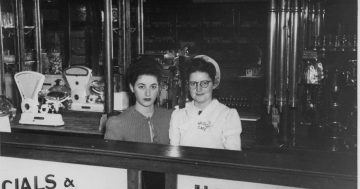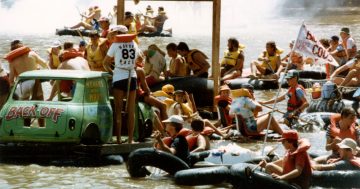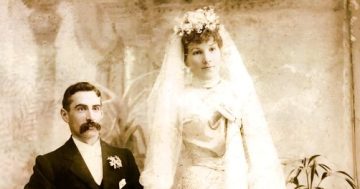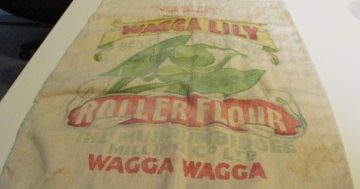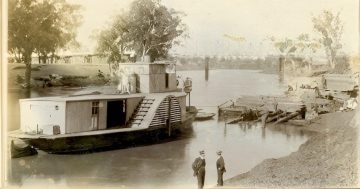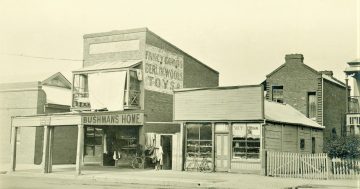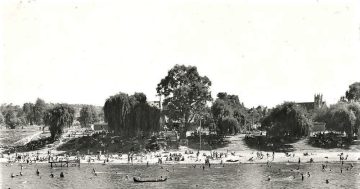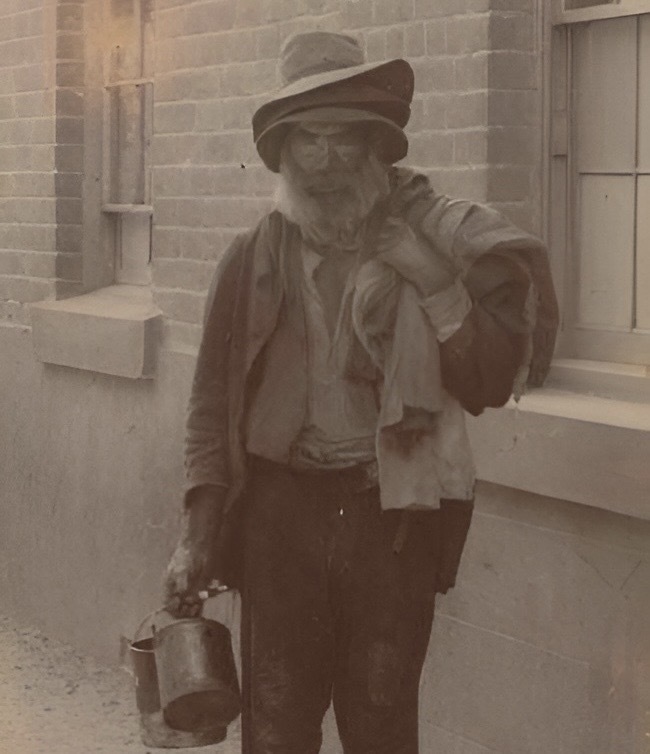
‘Joe the Whaler’, 1942. Photo: Museum of the Riverina.
‘Murrumbidgee Whaler’ is not a term that is often used today but was once a common expression used to describe the itinerant swagmen, sundowners and tramps who wandered the Riverina following the river.
In 1943, Wagga’s Daily Advertiser reflected on these “picturesque” characters of the late 19th and early 20th century who would “tramp the Murrumbidgee Valley from Hay to Gundagai and back again” taking about 12 months to do the round trip, downstream on the north side then back up along the southern bank.
One of Wagga’s best known Whalers was Murrumbidgee Joe, more commonly known as ‘Joe the Whaler’.
Like many colourful itinerants throughout history, Joe’s story was the subject of much speculation and rumour.
According to the Wagga Wagga District Historical Society’s Sylvia Walsh, who wrote a regular newspaper column under the nom de plume Bidgee Whaler, his name was Joe Banks.
The legend was that “he was of genteel English birth and had been well educated. Through his indulgence in drinking or gambling or both, he had disgraced his family and was banished to Australia; a remittance man who quickly squandered his remittance money when it arrived from the ‘Old Country’ every three months or so”.
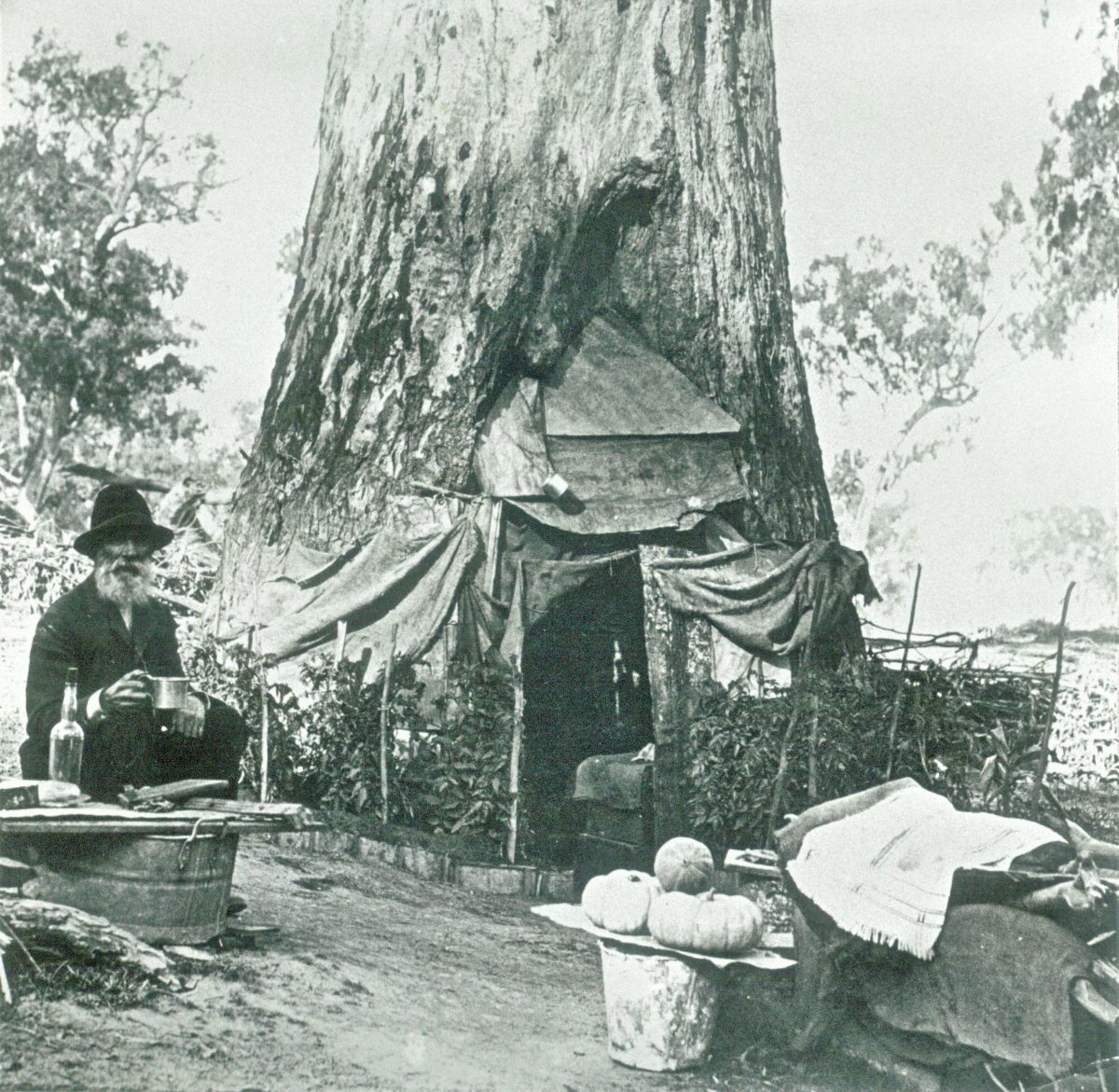
North Wagga Flats Tree House. Photo: Museum of the Riverina.
In his younger years, Joe was reported to be a lively, engaging character but became more sullen and uncommunicative as the booze took its toll.
The Daily Advertiser recalls that he was a familiar sight at the various properties around the region where he would receive food “without begging”.
One of his eccentricities was the wearing of two or more hats at once.
“He carried his belongings strapped about his person and carried a large billy can in which generally were two or three pups,” the Advertiser records.
“These were apparently poured out when he wished to make a can of tea. He usually had a number of felt hats carried underneath the straps of his harness.
“He sold the pups when opportunity offered but it is not clear what he did with the various hats.”
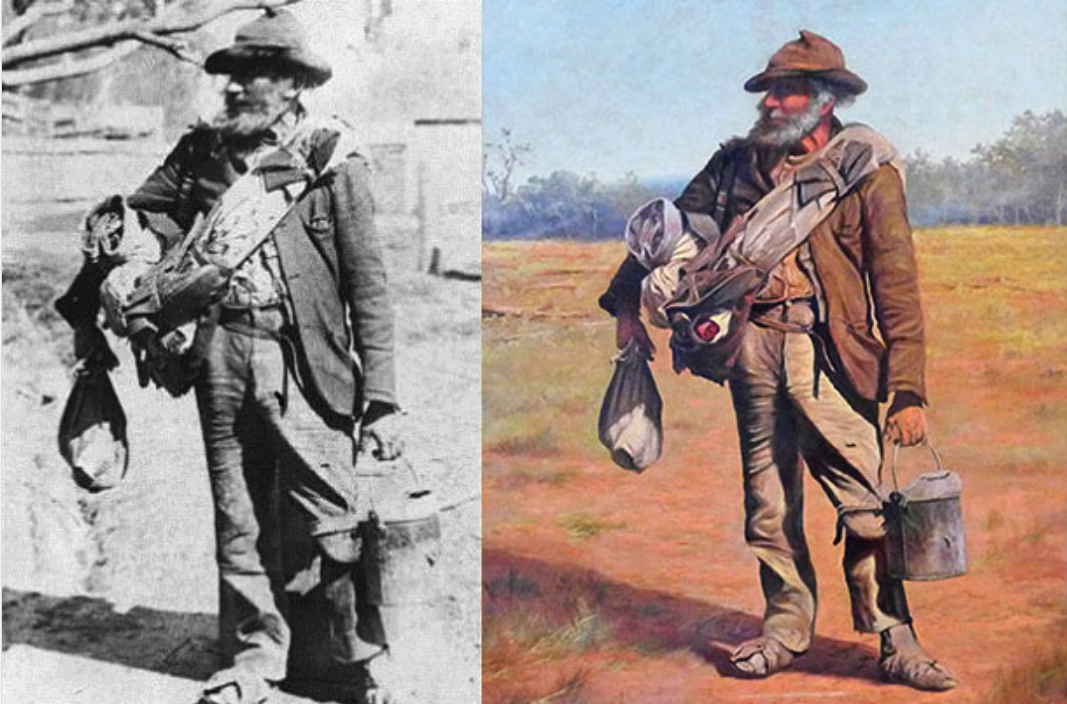
An original photograph of Joe the Whaler and the oil painting by Charles Astley that hangs in the Riverine Club in Wagga. Photo: The Riverine Club.
One of his favourite tracks to walk was between Wagga and Gobbagombalin and he occasionally camped in the hollow of a large gum tree on the North Wagga river flats.
His favourite watering holes were the Black Swan Hotel at North Wagga and the Caledonian Inn at Cartwright’s Hill.
Like many homeless wanderers today, Joe was described as ‘crazy’ and the subject of frequent nuisance complaints and had regular contact with the constabulary.
He refused to be institutionalised and the police would generally help him get cleaned up and back on his feet during stints in jail.
As well as various photographs, Joe’s iconic likeness was captured by artist Charles Astley and the painting now hangs above the fireplace in the bar of the Riverine Club in Wagga.







